Comments / Questions (50)
![]() Pia Berglund wrote:
Pia Berglund wrote:
Jag har kommit fram till att öka 10 maskor men vart ska dom sitta?
27.03.2018 - 15:12DROPS Design answered:
Hej Pia, menar du de 2 maskor som skall ökas både fram och bak totalt 10 ggr ? I så fall gör du såhär: ÖKNINGSTIPS: Det ökas 1 maska på varje sida av varje markör så här: Sticka tills det återstår 1 maska före markören, gör 1 omslag, sticka 2 rätmaskor (markören sitter mitt emellan dessa 2 maskorna), gör 1 omslag. På nästa varv stickas omslagen vridet räta (dvs i bakre maskbågen i stället för i främre) för att slippa hål. Lycka till!
04.04.2018 - 12:21
![]() Kitty wrote:
Kitty wrote:
Wo soll ich Messen? An der Vorder- oder Rückseite. Das ist leider nicht in der Anleitung beschrieben und nicht ganz klar wegen der Erhöhung an der Rückseite. LG Kitty
24.03.2018 - 22:30DROPS Design answered:
Liebe Kitty, gemessen wird an der vorderen Mitte. Der Hinweis dazu wird ergänzt. Bei den nachfolgenden Maßangaben ist er bereits enthalten. Weiterhin viel Spaß beim Stricken!
25.03.2018 - 11:29
![]() Eveliina wrote:
Eveliina wrote:
Mitä senttimääriä nuo koot vastaavat? Ohjeesta ei löydy kirjainkokojen lisäksi mitään vihjeitä tähän.
14.02.2018 - 00:48DROPS Design answered:
Valitettavasti tähän malliin ei löydy mittapiirrosta. Housujen joustinneule on kuitenkin hyvin venyvä, joten neulo tavallisesti käyttämäsi koon mukaan.
21.03.2018 - 17:24
![]() Maria Leister wrote:
Maria Leister wrote:
Er den liten i størrelsen? Savner mål eller tegning.
07.02.2018 - 13:05DROPS Design answered:
Hei Maria. Vi har dessverre ingen målskisse på denne modellen, men ditt ønske er formidlet videre til design avdelingen for fremtidige lignende modeller. I denne modellen er det både vrangbord opp, i sidene og nede, så den er svært tøyelig. Bruker du vanligvis str S, vil str S i dene modellen helt sikkert passe fint. God Fornøyelse!
09.02.2018 - 10:52
![]() Elin Bäckstrand wrote:
Elin Bäckstrand wrote:
Hej! Undrar om jag ska mäta på framsidan eller den förhöjda bak när jag är färdig med resåren i midjan?
09.01.2018 - 18:41DROPS Design answered:
Hej Elin, du skall mäta på framsidan. Lycka till!
22.01.2018 - 16:35
![]() Maria Eriksson wrote:
Maria Eriksson wrote:
Hej, på mönstret står det att man ska sticka tills arbetet mäter 20 cm, men ska man då mäta fram eller bak? På alla efter följande mätningar står bak eller fram men inte första gången. Hjälp snabbt tack!
01.01.2018 - 10:28DROPS Design answered:
Hej Maria, du mäter fram första gången. Lycka till :)
11.01.2018 - 08:32
![]() Lina wrote:
Lina wrote:
Ok! Fina!
31.10.2017 - 19:14
![]() M. Lúcia Borrões wrote:
M. Lúcia Borrões wrote:
Vou tentar fazer estes calções para uma menina de 12 anos. Na apresentação diz que encontrarei as medidas (em cm) da peça terminada no fundo das explicações do modelo. A verdade é que não as encontro e seria para mim muito importante, para perceber se o tamanho XS poderia ser adequado. Existe essa informação? Obrigada
27.10.2017 - 12:16DROPS Design answered:
Veja o gráfico do modelo (desenho da camisola). Tem as medidas em cm para todos os tamanhos.
06.11.2017 - 13:26
![]() Johanna wrote:
Johanna wrote:
Fint
24.10.2017 - 23:27
![]() Gaëlle wrote:
Gaëlle wrote:
I don't find the graphic with the measurements of the finished garment at the bottom of the pattern. Can you help me find it?
19.10.2017 - 17:18
Why Not#whynotshorts |
|
 |
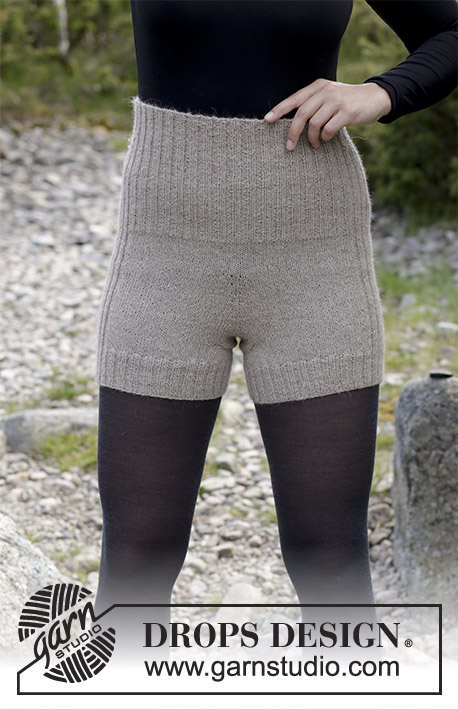 |
Knitted shorts with rib, worked top down. Sizes S - XXXL. The piece is worked in DROPS Flora.
DROPS 182-13 |
|
|
INFORMATION FOR THE PATTERN: INCREASE TIP: Increase 1 stitch on each side of each marker as follows: Work until there is 1 stitch left before the marker, make 1 yarn over, knit 2 (the marker sits in the middle of these 2 stitches), make 1 yarn over. On the next round knit the yarn overs twisted (i.e. in the back loop of the stitch instead of the front) to avoid holes. -------------------------------------------------------- SHORTS: The piece is worked in the round with circular needle, top down. Cast on 168-192-216-240 stitches with circular needle size 2.5 mm and Flora. Insert 1 marker at the beginning of the round (= mid back) and 1 marker after 84-96-108-120 stitches (= mid front). Work rib as follows from mid back: Sizes XS/S and L/XL: Purl 1, * knit 2, purl 2 *, repeat from *-* until there are 3 stitches left, finish with knit 2 and purl 1. Sizes M and XXL/XXXL: Knit 1, * purl 2, knit 2 *, repeat from *-* until there are 3 stitches left, finish with purl 2, knit 1. When the piece measures 5 cm, work an elevation at the back as follows: Work 11 stitches rib, turn, tighten strand, work 22 stitches rib back, turn, tighten strand, work 32 stitches rib. Continue in this way by working 10 more stitches each time you turn until you have worked over a total of 122-122-142-142 stitches. Turn one last time to be on the right side of the piece. Work to the marker mid back = beginning of the round. Continue in the round with rib until the piece measures 20-22-24-26 cm mid front. Change to circular needle size 3 mm and work as follows: 27-33-39-45 stitches stocking stitch, 30 stitches rib as before, 54-66-78-90 stitches stocking stitch, 30 stitches rib as before and 27-33-39-45 stitches stocking stitch. When the piece measures 24-26-28-30 cm mid front, increase 2 stitches front and back – READ INCREASE TIP. Repeat the increases every 4th round a total of 10 times – the increased stitches are worked in stocking stitch = 208-232-256-280 stitches. REMEMBER THE KNITTING TENSION! When the piece measures 35-37-39-41 cm mid front, cast off the first 8-8-10-10 stitches after the marker mid back, work the next 88-100-108-120 stitches and then place them on 1 thread (= leg), work the next 16-16-20-20 stitches and leave them on the needle (= gusset), work the next 88-100-108-120 stitches and then place them on 1 thread (= leg), cast off the remaining 8-8-10-10 stitches, cut the strand. Then work 11-12-13-14 cm stocking stitch back and forth over the 16-16-20-20 stitches on the needle, cast off and sew the gusset to the 16-16-20-20 stitches which were cast off mid back. RIGHT LEG: Place the 88-100-108-120 stitches from the thread in the right side on short circular needle size 3 mm, in addition knit up 24-28-32-32 stitches along the one side of the gusset = 112-128-140-152 stitches. Continue by working rib over 30 stitches in the side as before, the other stitches are worked in stocking stitch. Work as this until leg measures 3 cm. Change to short circular needle size 2.5 mm and work rib, knit 2 / purl 2 over all stitches, make sure the rib is worked as before over the 30 stitches in the side. Work rib for 6 cm, cast off with knit over knit and purl over purl. LEFT LEG: Place the stitches from the other thread back on the needle and work as for the first leg. |
|
Have you finished this pattern?Tag your pictures with #dropspattern #whynotshorts or submit them to the #dropsfan gallery. Do you need help with this pattern?You'll find 22 tutorial videos, a Comments/Questions area and more by visiting the pattern on garnstudio.com. © 1982-2025 DROPS Design A/S. We reserve all rights. This document, including all its sub-sections, has copyrights. Read more about what you can do with our patterns at the bottom of each pattern on our site. |
|








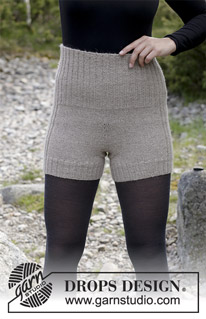




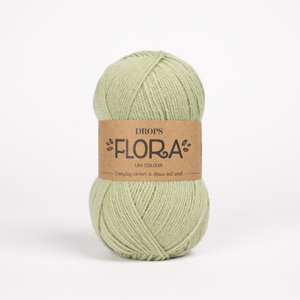
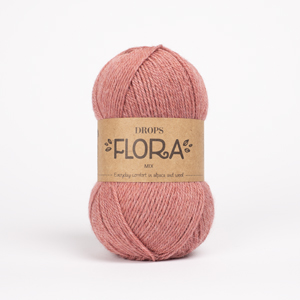

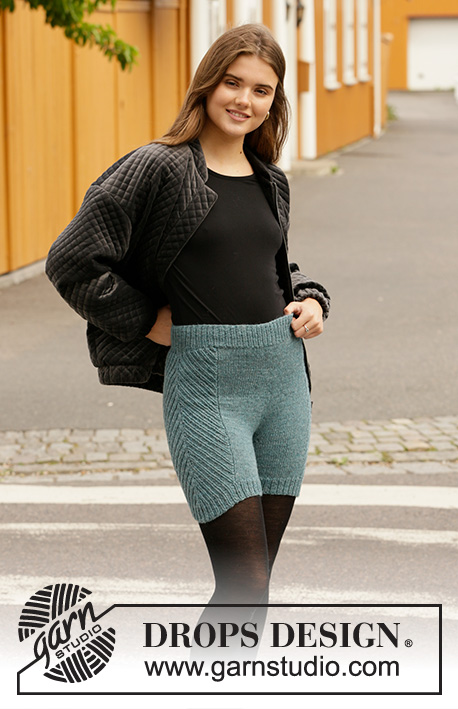
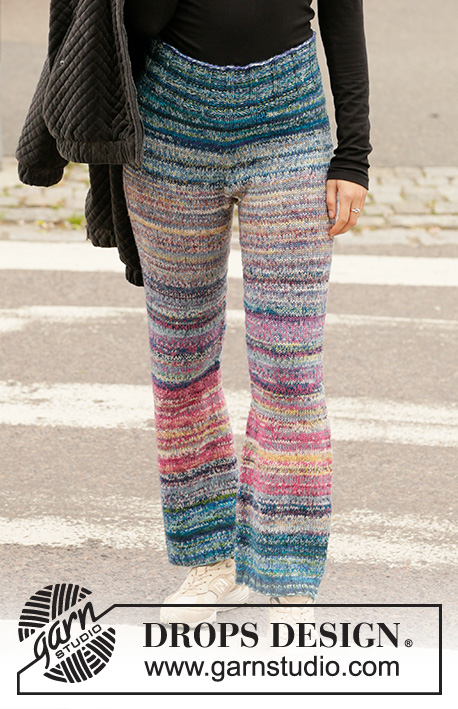









































Post a comment to pattern DROPS 182-13
We would love to hear what you have to say about this pattern!
If you want to leave a question, please make sure you select the correct category in the form below, to speed up the answering process. Required fields are marked *.